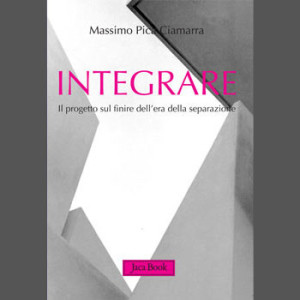MPC, “Integrare, il progetto sul finire dell’età della separazione”
Jaca Book ed., Milano 2010, pp.216
The culture of integration is suffocated by the culture of separation: in itself, every technique offers answers to individual problems, but it introduces chaotic germs. This can be seen in training processes, in regulatory systems, in administrative logic, in the relationship between plans and projects, everywhere: hence in the physical spaces in which we are immersed. Coordination between actions seems to be increasingly modest, even though technologies and innovations enhance the possibilities of linking every element and foster confidence in the future. In our spaces, individuality prevails over super-individuality, and it is not only the environmental issue – or the relationship between the quality of the physical environment and inappropriate, or even criminal, behaviour – that highlights the almost utopian need to move forward together. Disciplinary divisions and exaggerated specialisations have long been analysed with irony, criticised, and their assumptions broken down with scientific rigour. From individual references – such as Neutra’s Designing to Survive – to lucid analyses of claims such as Servan-Schreiber’s The American Challenge, to the research of the Club of Rome with The Limits to Development, to the impetuous upheaval of the old balances that lead – not only Serge Latouche – to theorize about degrowth.
Today, more than ever, and in every sense, the imperative is to integrate: not to dissolve identities, but to strengthen them in dialectical comparisons, to exalt them in their intertwining and converging towards shared goals. If this culture does not invade every aspect of civil organisations, there can only be hints of integration. In the processes of transforming living environments, integration means governing complex systems; rejecting sectorial autonomy; seeking out units characterised by super-individuality, i.e. “informed” by the contexts in which they are to be immersed. Designing in an integrated way implies simultaneous thoughts on spatial fi gures/functional chains and human behaviour/memory, signs or meanings that permeate a place.
Not in chronological sequence and with some variation from the originals, this collection of interventions developed on different occasions and in different places pushes to challenge the future by acting in integrated forms, argues confidence in what architecture can do to contribute to the improvement of the human condition.

